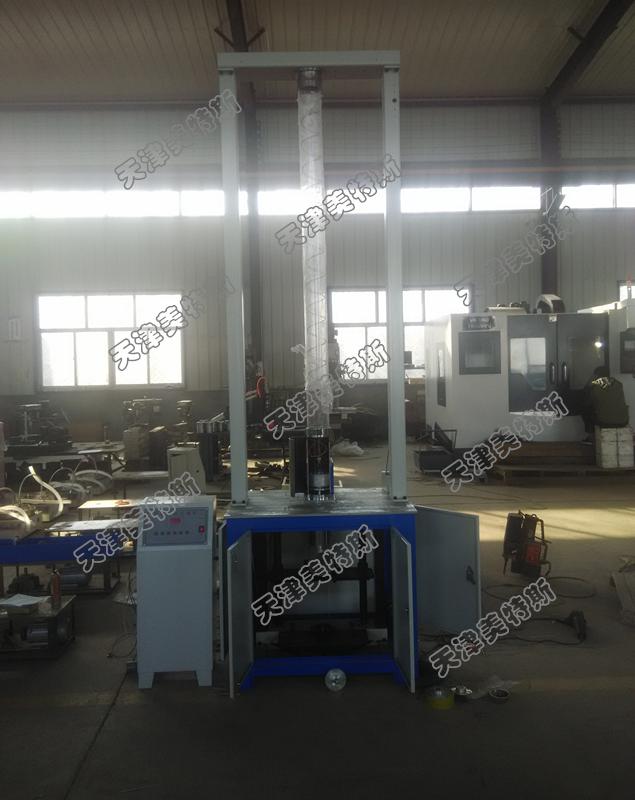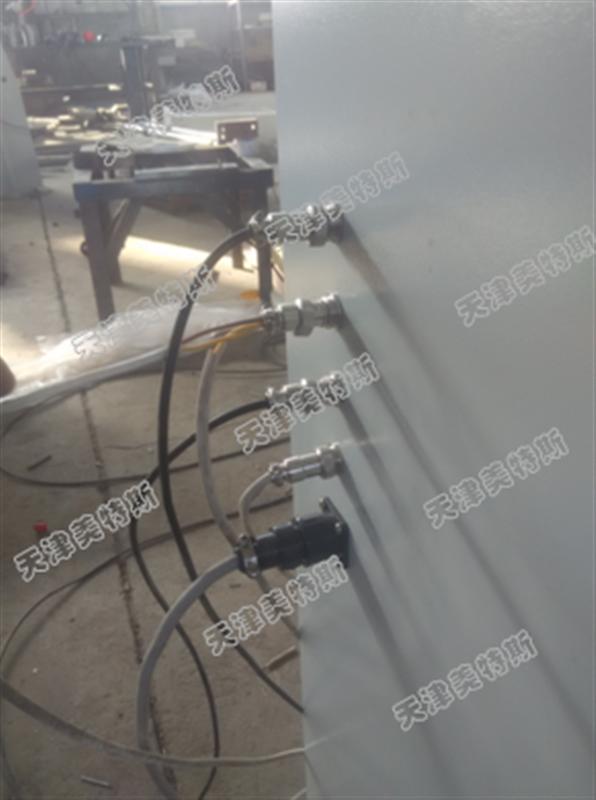Drop Hammer Impact Tester: Structure, Installation & Usage Guide
Structure
The drop hammer impact tester is composed of several key components, including the frame, body, hammer assembly, lifting mechanism, secondary impact prevention system, automatic dropping mechanism, and an electronic control cabinet. These parts work together to ensure accurate and safe testing procedures.
1. The test machine is made up of racks, body, hammer body, lifting mechanism, anti-secondary impact mechanism, automatic drop hammer mechanism, and an electronic control cabinet.
2. A stepper motor and guide electromagnetic iron are used for lifting and lowering the hammer body, providing both operational control and safety protection during the process.
3. The motor drives a reducer that controls the vertical movement of the hammer. The control cabinet display shows the current lift height, allowing operators to monitor and adjust as needed.
4. The anti-secondary impact device uses a traction electromagnet to control the hammer mechanism. When the hammer hits the sample and rebounds, a photoelectric sensor generates a signal that activates the secondary impact prevention system, clamping the rebounding hammer quickly to avoid repeated impacts.
Installation Method
To install the main unit, place it on a level surface. First, connect the column to the upper beam, then insert the guide tube vertically into the observation tube. Finally, position the column on the main table and secure it properly.


Usage Instructions
1. Determine the mass of the hammer and the desired impact height based on the test requirements. Prepare the sample accordingly.
2. Determine the hammer mass:
- a. For R5×19, R10×19, R25×19, R30×19, R50×25 (aluminum, 40Cr mixed):
- A hammer + hammer + nut = 0.50kg
- B hammer + hammer + nut = 1.75kg
- C hammer + hammer + hammer + nut = 9.50kg
- b. Example: If the hammer mass is 4.0kg, you can use B hammer + hammer + nut (1.75kg) + 0.25kg weight + 2.00kg weight.
- c. For R50×90 steel hammer head:
- A hammer + hammer + nut = 1.25kg
- B hammer + hammer + nut = 2.50kg
- C hammer + hammer + hammer + nut = 10.25kg
- d. For R50×90 aluminum hammer head with a 1kg impact, use A hammer + R50×90 aluminum hammer + nut = 1.00kg.
- e. For a 0.25kg impact, use 0 hammer + R50×25 (aluminum) hammer + round nut = 0.25kg.
3. Insert the hammer rod through the sliding sleeve under the hammer seat, place the selected weight on the rod, and tighten the nut securely.
4. Turn on the power and enter the working state.
5. Press the "fast drop" button to release the electromagnet and lift the hammer. Then press "stop" to prepare for placing the hammer.
6. Open the test chamber door and place the sample on the V-shaped support. Rotate the handle so that the sample just touches the cover.
7. Press the "down" button to allow the electromagnet to contact the hammer and clear the path. Then press "up" to raise the hammer to 2 meters.
8. Press the "pre-drop" button first, then the "down" button to automatically drop the hammer and impact the sample. After the impact, the solenoid valve closes due to the photoelectric switch, preventing a second impact.
9. Remove the sample for inspection after the test.
10. For the next test, press the "clear" button, then the "fast drop" button to reset the electromagnet. Repeat steps 7 and 8 after the hammer returns to its original position.
11. To shut down, turn off the power box switch and the main power supply.
Precautions
1. Ensure the test machine is placed on a solid, stable foundation to prevent instability during operation.
2. Always follow safety procedures. Do not perform any actions under the hammer while it is being lifted or lowered. Keep the protective door closed at all times during testing.
LiFePO4 Lithium Wall Mounted Battery
OREMA LFP Series power wall LiFePO4 batteries are an ideal choice for both home energy storage systems and small-medium enterprises (SMEs). Our highly qualified research and development team has designed these batteries with an ultra-modern design, ensuring an exceptionally long service life and unparalleled reliability in energy storage.
One of the key technical features of our batteries is their excellent performance in higher temperatures. They are designed to withstand and perform optimally even in extreme temperature conditions, making them suitable for various environments. Additionally, our LiFePO4 batteries offer a higher capacity range, allowing for more energy storage and longer usage times.
Another advantage of our LiFePO4 batteries is their lighter weight compared to traditional battery options. This makes them easier to handle and install, without compromising on their storage capacity or performance. Moreover, these batteries operate in a pollution-free manner, contributing to a cleaner and greener environment.
Due to these technical advantages, our LiFePO4 batteries have gained significant popularity among users and have experienced rapid development. They have become the preferred choice for those seeking high-quality energy storage battery solutions that meet their demanding requirements.
In conclusion, OREMA LFP Series power wall LiFePO4 batteries offer exceptional performance, reliability, and longevity in energy storage. With their advanced features, including excellent performance in higher temperatures, higher capacity range, lighter weight, and pollution-free operation, these batteries have become the go-to solution for those who require top-notch energy storage capabilities.
Solar Lithium Batteries,LiFePO4 Lithium Batteries,Wall Mounted Battery
OREMA POWER CO., LTD. , https://www.oremapower.com